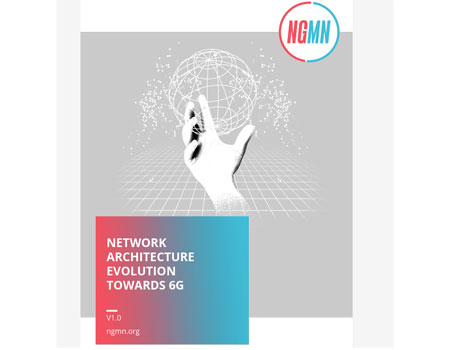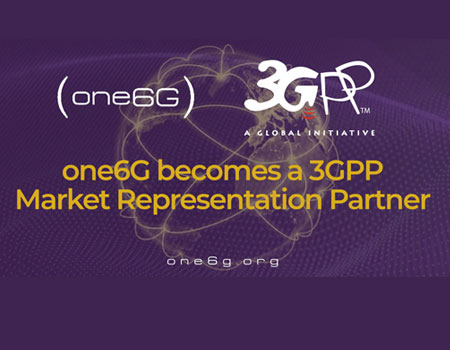5G for the connected World
November 13, 2019
The recently published book ‘5G for the connected World’, edited by Devaki Chandramouli, Rainer Liebhart and Juho Pirskanen explains 5G in detail, focusing on 3GPP Release 15 content and how it can be used to enable new services beyond the ones specified for LTE. In this edited extract Devaki Chandramouli and Rainer Liebhart look at how URLLC makes the difference:
One of the key differentiators between LTE and 5G is the capability to provide ultra-low latency and extreme high reliability connectivity service to applications.
Low latency translates usually to a few milliseconds, even 1ms in the extreme case, for end-to-end latency between client and server on the user plane. Control plane latecy requirements are usually less stringent, in range of 10ms.
 Ultra-high reliability of the connection between device and network means at least 99.999% (three nines!) reliability is needed to keep a wireless connection to the device active.
Ultra-high reliability of the connection between device and network means at least 99.999% (three nines!) reliability is needed to keep a wireless connection to the device active.
From an e2e perspective, fronthaul and backhaul connections as well as network element availability also play a crucial role for guaranteeing ultra-high reliability. Network element availability refers to the downtime of the network and its components such as base stations, user plane functions, control plane network functions, and application servers.
Some of the important and well-known use cases requiring Ultra-Reliable Low Latency Communication (URLLC) are remote health-care and surgery, industrial robotics and autonomous driving. For some of these applications e2e latency requirements go down to 1ms or even less (e.g. closed-loop control applications), while reliability requirements can go up to five 9s.
Industrial applications in a limited area or region, in a factory, harbor, airport, campus are some of the most promising use cases to achieve a positive business case for early low latency and high reliable 5G connectivity, as the deployment of a nationwide URLLC network may be too cost – prohibitive requiring the roll out of a high density of radio sites and quite many edge clouds hosting URLLC sensitive applications.
V2X as a 5G use case:
Another technology where 5G, as a replacement or complement to LTE and other technologies, can play a key role is Vehicle-to-X communication (V2X), especially Vehicle-to-Vehicle (V2V) and Vehicle-to-Network/Vehicle-to-Infrastructure (V2N/V2I).
In V2V communications vehicles are mainly broadcasting information directly to their neighbors, with information on vehicle breaking or warnings about hazards, pedestrians or another vehicles. V2N/V2I allows for the exchange of information in a wider area, which could be an accident or obstacle around a corner or at the next junction.
On-board sensors provide only a local environment support, and cannot “look” beyond other vehicles, obstacles and corners. On the contrary, network assisted information sharing can take a wide area into account, potentially providing information faster than via sensor measurements - leading to a higher reliability by combining information received via sensors and wireless networks.
In this way, 5G will allow for the support of use cases for advanced safety services including; collision detection, emergency vehicle prioritization, traffic light operation to maintain optimal speeds, in-car traffic signals, traffic jam warning and Software/map updates.
These use cases will benefit greatly from Edge Computing capabilities where application servers are hosted in Edge Clouds close, typically within 5-25 kilometers, to the radio sites.
When talking about full autonomous driving (automation level 5) wireless technologies like 5G can support and complement on-board systems like sensors and cameras in controlling the vehicle, but not replace them.
Autonomous driving will take place either within or outside network coverage, maintaining the safety of passengers and vehicles. An example of how the system would adapt is where the network allows very dense platooning of commercial vehicles, with several trucks following each other with as little as a meter separating them. Then, outside radio coverage the platoon density is automatically increased to a safe breaking distance of several meters.
When the distance is smaller in such a platoon, more vehicles can be “packed” together, less drivers are needed, less fuel is needed. Very dense platoons require however extreme high reliable networks and ultra-low latency (V2V and V2N) communication between the platoon members, which comes only with 5G.
The URLLC challenge:
Up to now, spectral efficiency has been the main design target for all wireless cellular communication systems, including LTE and earlier generations like 2G and 3G. URLLC, acknowledged as the enabler for supporting various newly emerging vertical services and applications, brings new challenges for the overall 5G system design.
One design target is to support communication reliability corresponding to Block Error Rate (BLER) of 〖10〗^(-5) and up to 1ms radio protocol layer latency for delivering short packets with a packet length of 32 bytes. The requirements will become more stringent when considering Industrial IoT (IIoT) applications which are covered in 3GPP Release 16.
The difficulty comes mainly with the simultaneous requirements on ultra-high reliability and low latency. These stringent requirements will impact the design of data channels, e.g. definition of retransmission schemes and building necessary redundancy. The design must also allow for enhanced reliability, (e.g. by using stronger coding schemes, redundancy schemes), to avoid retransmission of packets.
Key components for achieving low latency on the 5G radio interface are a new numerology with short Transmission Time Interval (TTI), grant-free UL transmission and reduced UE/gNB processing time.
High reliability comes with features like micro-diversity (higher order SU-MIMO), macro-diversity (multi-connectivity), hybrid ARQ, interference mitigation and enhanced control channel reliability.
5G is not just another radio technology providing more capacity and lower latency to the end consumer, rather it’s design and architecture principles follow a revolutionary concept, as for the first time this new system allows building open networks with open interfaces where any level of network control can be offered to the outside. The network can even offer itself as a service to tenants (network slicing). The system architecture is designed to use cloud native concepts and better exploit these technologies with new principles such as service based architecture, compute storage split, orthogonality of responsibilities, modularity, Reusability and access agnostic core.
The 5G technical enablers allow support of diverse use cases with very different demands for throughput, time sensitive, latency, reliability, security. 5G is set to provide new opportunities to mobile operators, industries and end consumers.
The New Radio and 5G System Architecture will give operators and verticals the right tools to harvest new business potentials and at the same time, it will blend into everyone’s life. Every industry will be affected by 5G as it transforms our individual lives, economy and society.
About the book:
‘5G FOR THE CONNECTED WORLD’ provides a summary of the current status of 5G development and an outlook beyond 3GPP Release 15.
The book has been contributed to by many active and former 3GPP delegates and edited by Devaki Chandramouli, Rainer Liebhart and Juho Pirskanen – three experts with almost 50 years combined experience in 3GPP.
Published by Wiley in 2019: https://www.wiley.com/en-us/5G+for+the+Connected+World-p-9781119247081


 3GPP News
3GPP News




